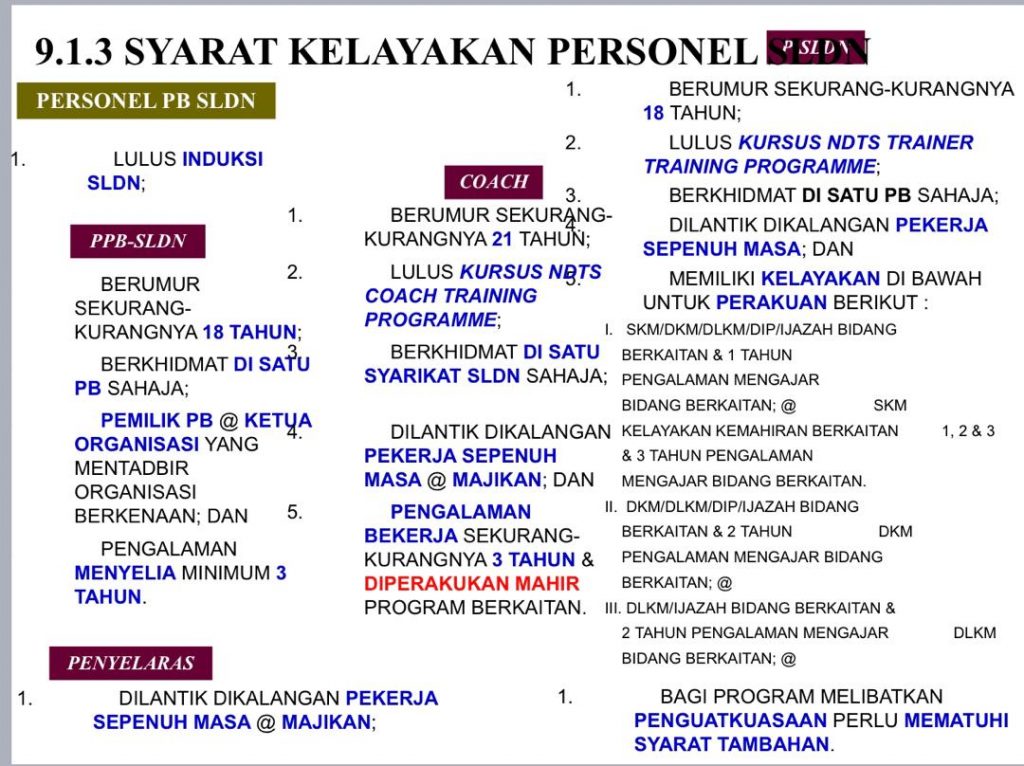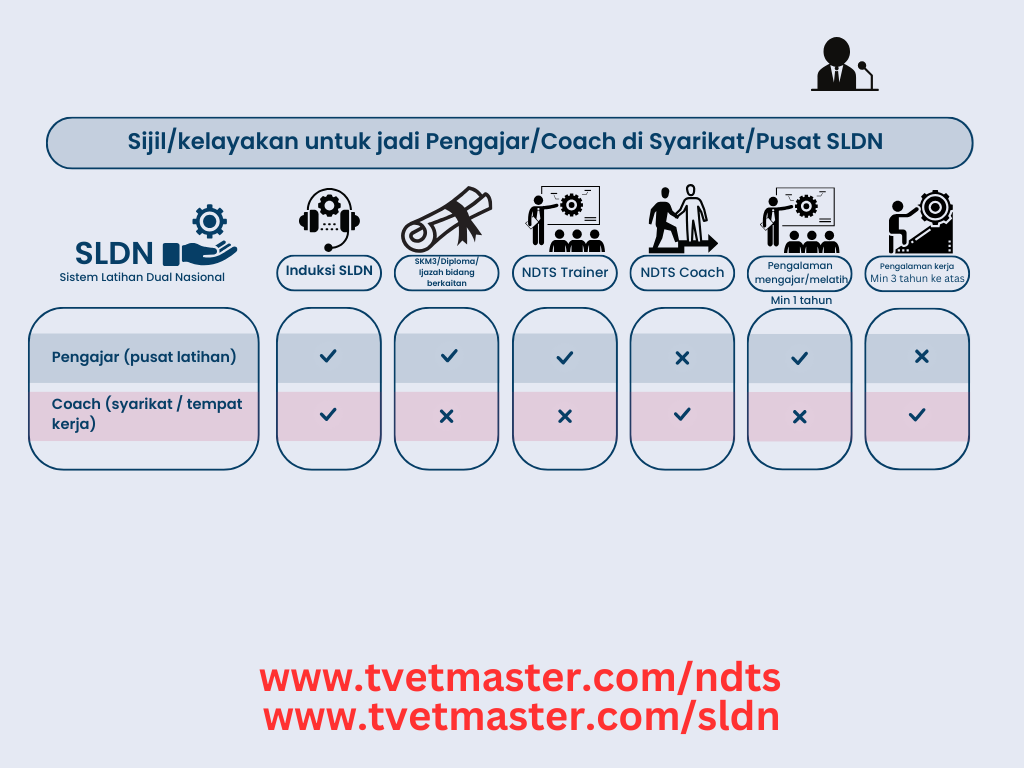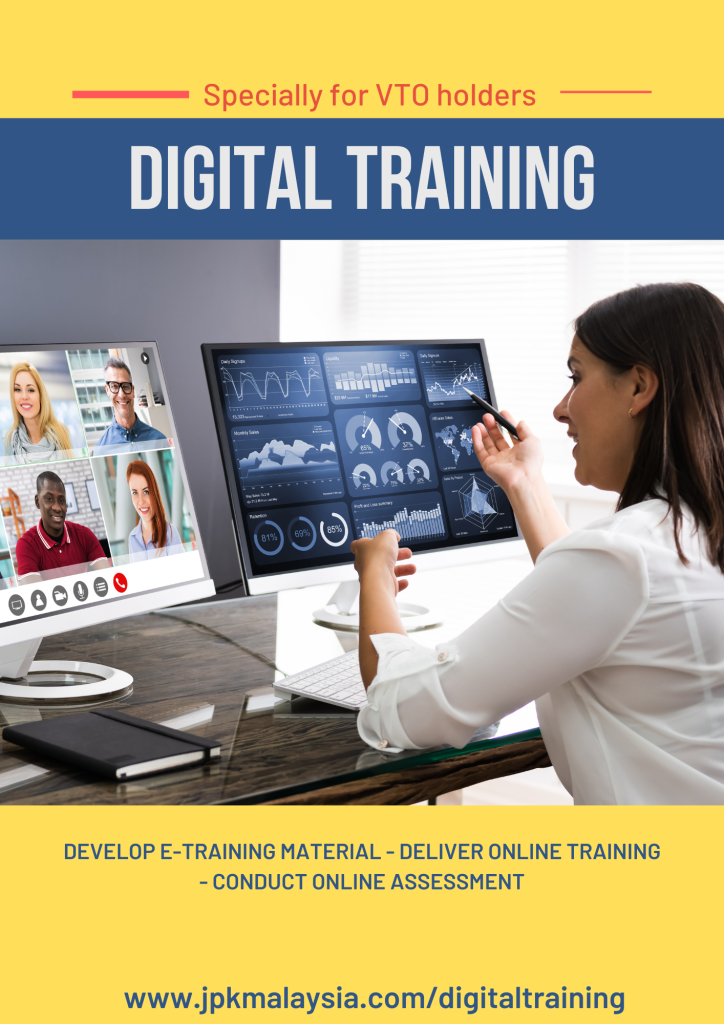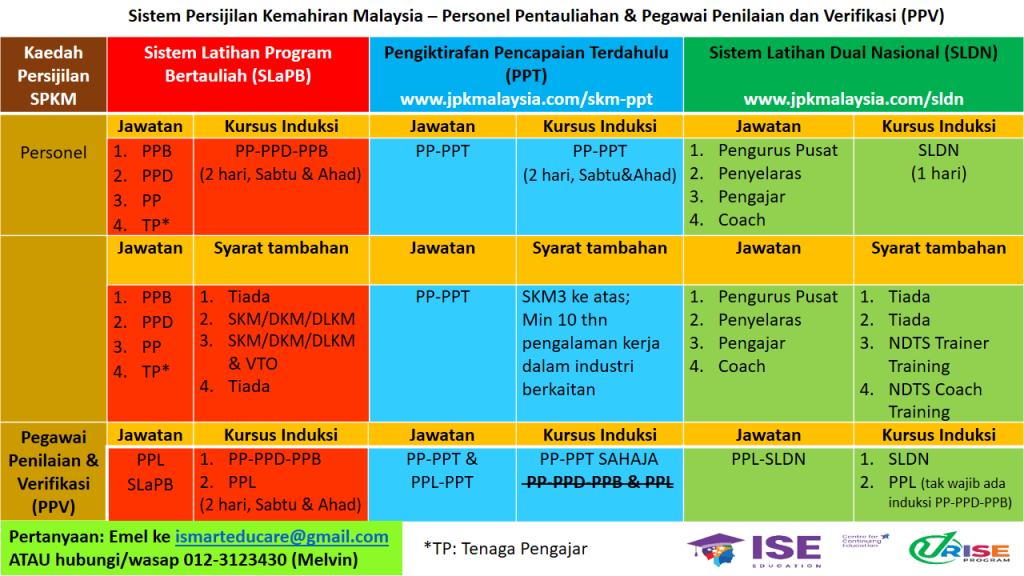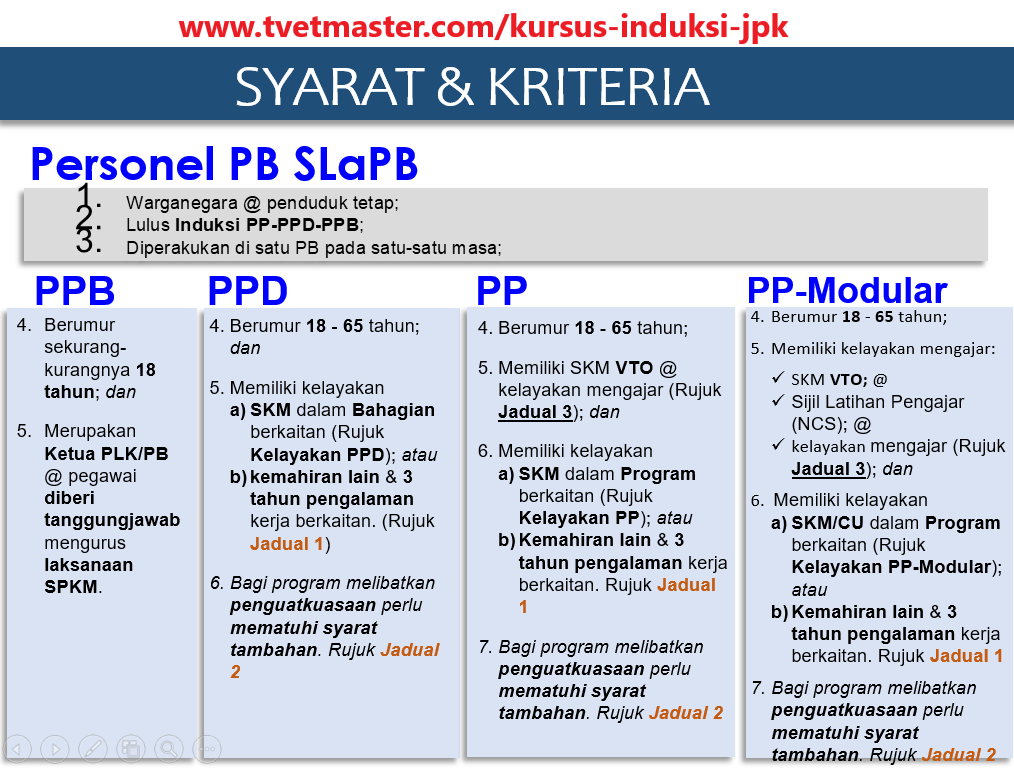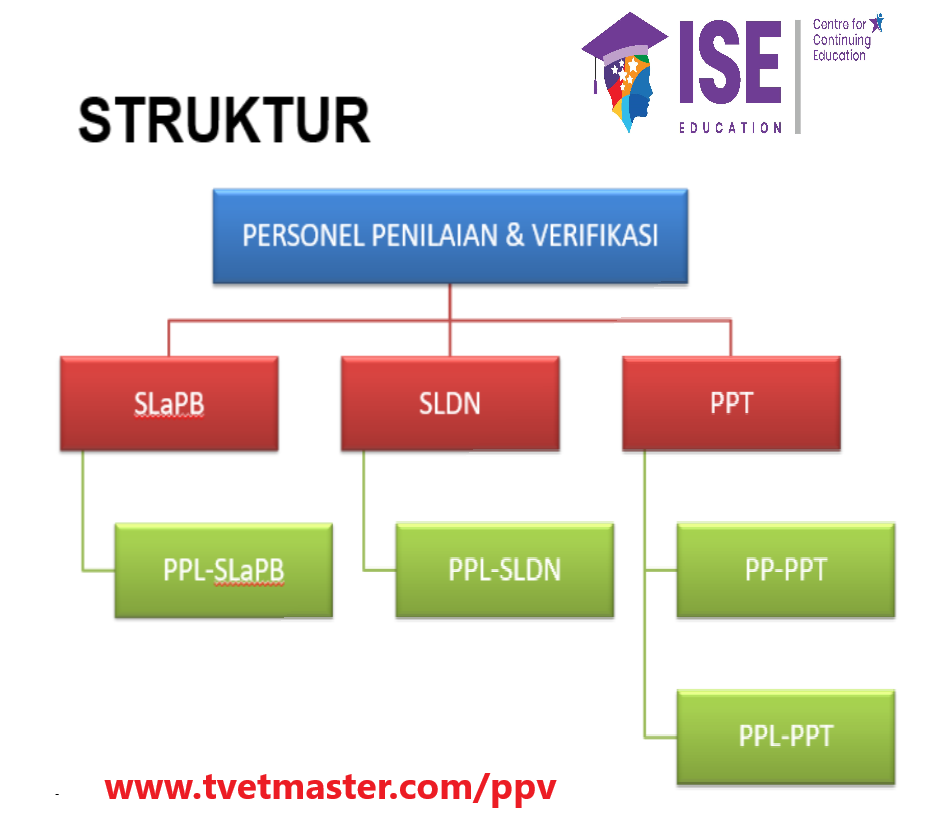What is a Skills Trainer?
A skills trainer is an industry practitioner equipped with certain skills dedicated to helping individuals learn and enhance specific skills. They can be teachers, coaches, mentors, or experts in their respective fields, who impart knowledge and expertise to adults seeking to develop in a particular area. From educational institutions to businesses and online platforms, skills trainers can be found in various settings. By leveraging their expertise, these trainers empower students and employees to strengthen their skill sets, ultimately preparing them for successful careers ahead.
Now, in the context of Malaysian Skills Certification System, a skills trainer is a personnel in an accredited centre that fulfills the requirement and certified by Director General (Ketua Pengarah) to train the students/candidates at the determined accredited centre.
Skills trainer, also commonly called as tenaga pengajar kemahiran in Malay by most, either serve/appointed at SLaPB or NDTS training centres.
* For BM version, kindly read at Tenaga Pengajar Kemahiran
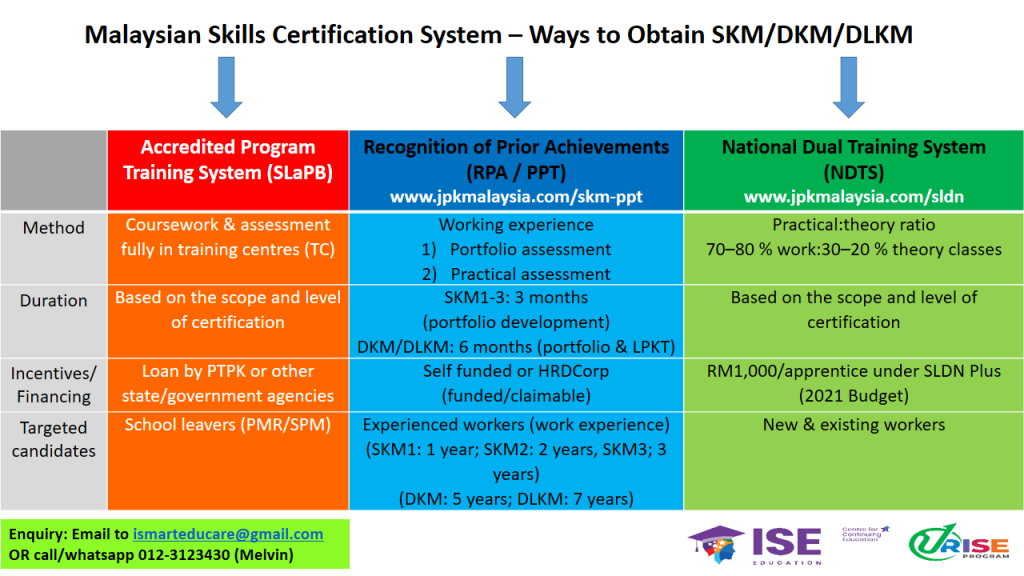
1. Jabatan Pembangunan Kemahiran (JPK) Accredited Centre under SLaPB
This is something like an academy/college, where training is 100% institution based.
As a skills trainer, you would be required to teach the students theoretical knowledge & perform practical, all within the institution (read here if you’re interested to set up a Pusat Bertauliah SLaPB )
Your students would be mainly school leavers, with or without SPM. Yes, you didn’t read wrongly, SPM is not needed to pursue a skills course or now popularly known as TVET courses.
There are actually 3 categories of skills trainer in a Pusat Bertauliah SLaPB; namely;
1. Tutor/lecturer/trainer @ Tenaga pengajar (TP)
2. Assesseor @ Pegawai Penilai (PP)
3. Assessor for Modular programs @ Pegawai Penilai Modular (PP-M).
1.1 Tenaga Pengajar
As a TP, your role is just to teach the students, whether it’s theory or practical. You would not be able to assess, hence couldn’t sign & give marks to your students’ portfolio.
To qualify as Tenaga Pengajar, you only need to pass induksi PP-PPD-PPB, besides having working experience and being competent in the program being taught.
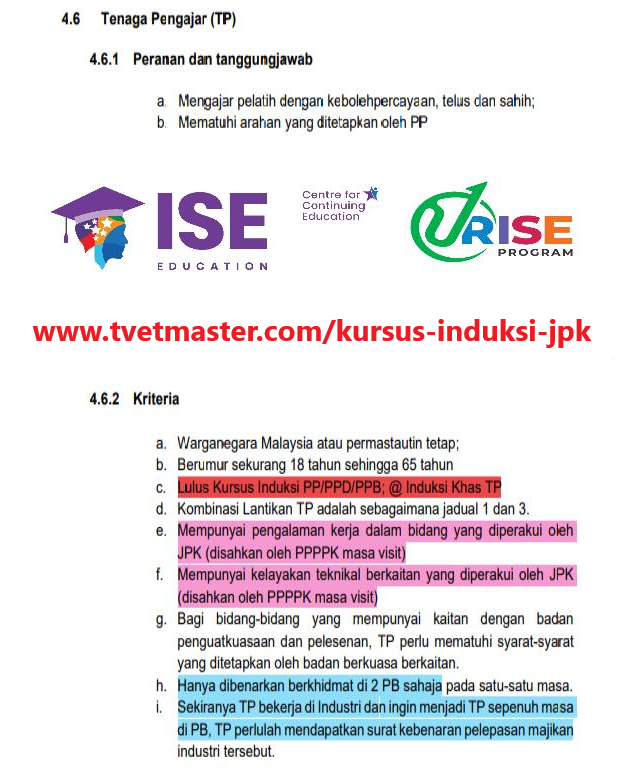
1.2 Pegawai Penilai (PP)
As a PP, your role is not just limited to teach but also assess the students in theory and practical.
Every JPK Accredited Centre MUST have this personnel (besides the internal verifier-PPD & centre manager-PPB) as part of the requirement to get program accreditation by JPK. Hence, PP is a VERY critical personnel in any Pusat Bertauliah SLaPB (in my view, the most critical one, despite being at the bottom of the organisation chart).
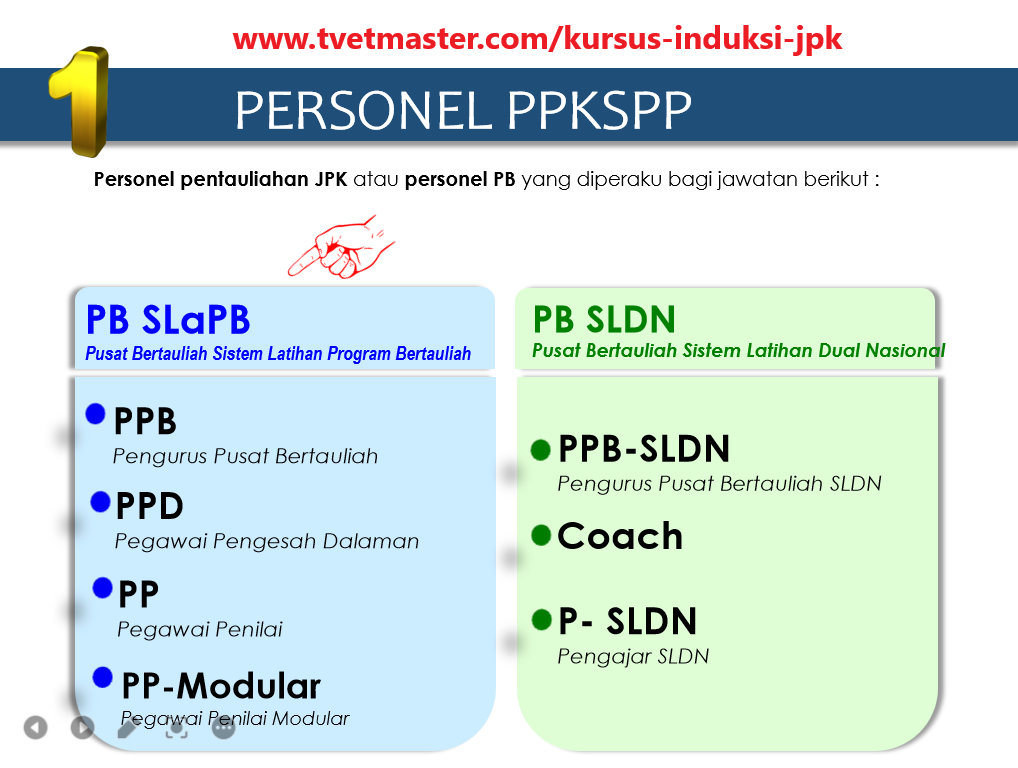
To qualify as a PP, you need to have:
1. Induksi PP-PPD-PPB certificate
2. Sijil Kemahiran Malaysia (usually minimum Level 3)
3. VTO or TVET-i certificate (trainer cert)
1.3 Pegawai Penilai Modular (PP-M)
Just like PP, your role is not just limited to teach but also assess the students in theory and practical. However, as a PP-M, you can only be appointed for Modular programs (as the name suggest),
In JPK’s context, modular@micro credential program refers to micro-qualifications awarded for training programs implemented in a modular manner over a shorter period of time. It is developed based on a Competency Unit (CU) or Work Activity (WA) or a combination of CU or a combination of WA for the specific competence of a National Occupational Skills Standard (NOSS).
To qualify as a PP-M, you need to have:
1. Induksi PP-PPD-PPB certificate
2. Sijil Kemahiran Malaysia or Statement of Achievement (PC) for the program to be appointed as PP-M; AND
3. VTO/TVET-i certificate or NCS-TTT (trainer cert)

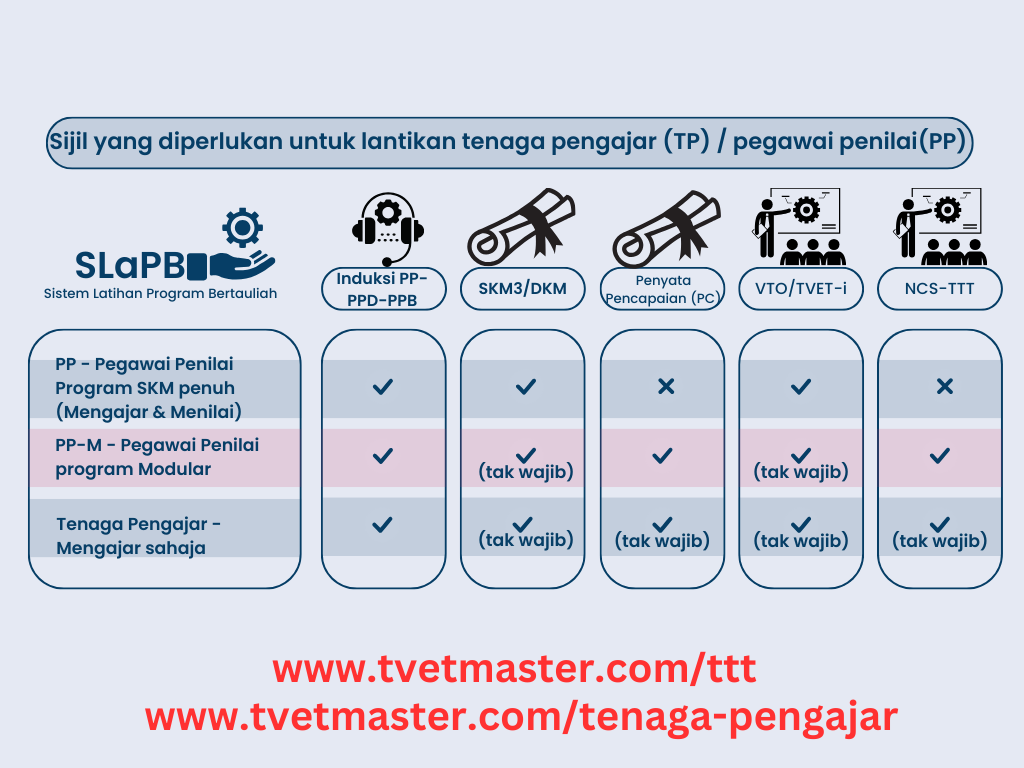
2. National Dual Training System (NDTS) Training Centre
This is an industrial based training, where 20-30% of training is done at training centre and balance 70-80% is done at workplace.
Your apprentices would either be the existing or new work force of the NDTS company.
To qualify as a NDTS Trainer, you need to have:
1. Induksi SLDN certificate
2. Sijil Kemahiran Malaysia/Diploma Lanjutan Kemahiran Malaysia/Diploma Lanjutan Kemahiran Malaysia/Diploma/Degree in relevant field AND 1 year of relevant teaching experience OR qualification in the particular field AND 3 years of relevant teaching experience
3. Passed NDTS Trainer Training Programme (4 days f2f programme)
